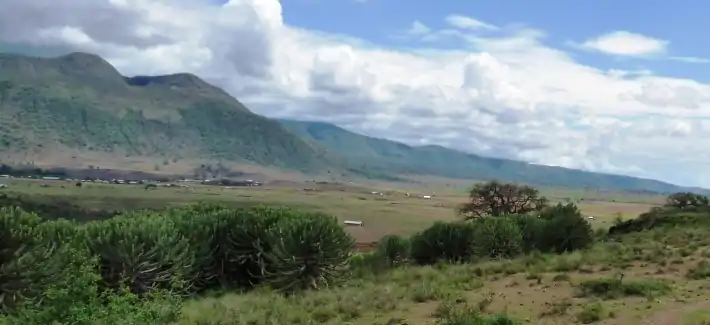Selela
Selela is an administrative ward in the Monduli district of the Arusha Region of Tanzania. The name Selela means Clean water in the Maasai language.
The population is growing rapidly: according to the 2002 census, the ward had a total population of 5,102,[1] in the 2012 census this number has risen to 8,703 (+ 71%). This number can be divided in the main village Selela (4,691) and the subvillage Mbaash (4,012).
The current Village Chairman of Selela is Mr. Kileli Orboset, the Village Councillor is Mr. Cathbert Meena.

In Selela there are a number of schools:
- Selela Primary School is the largest and counts almost 1,200 children. The head teacher is Mr. Tipaay Mollel.
- In the subvillage of Mbaash (which means 'between the mountains in Maasai language), about 16 km from Selela, there's also primary school which counts more than 500 children. The head teacher is Mr. Paakwai Meitamei.
- A third primary school is about 7 km from Selela village and is called Ndinyika Primary School, with more than children. Ndinyika means 'far from the boma' in Maasai language. Head teacher is Mr. Kereto Mollel.
- Oltinga Secondary School is built on the escarpment and overviews Selela village. This school has almost 400 students from the region around Selela. Head teacher is Mr. Kitally.
Selela has a dispensary (doctor Msalu) and since 2016 a new dispensary at Mbaash has opened (doctor Lekundayo).
Selela and Mbaash are supported by Tanzania Support Foundation, which is an NGO from the Netherlands. This organization especially helped the Selela schools with several supplies (for example school desks, computers, books, exercise books, storage cupboards, construction materials for classrooms and teachers houses et cetera) and the medical dispensary (for example several medical supplies, wheelchairs, walkers and a solar installation).
Early 2015, a group of volunteers from Atos Foundation help to gather funds and constructed a girls' dormitory at Mbaash Primary School. A second group of volunteers from Hanze Foundation has constructed a boys' dormitory in 2016. This was very much necessary since the children live widely scattered around the school up to 23 km distance. Those who live so far away, had to leave their hut at around 4.00 a.m. when it's still pitch dark and walk for 5 hours through an area where poisonous snakes live, hyenas, elephants and more. After school's out, around 3.30 p.m., they had to walk all the way back, to arrive at the hut between 8.00 and 9.00 p.m., when it was pitch dark again. As a result, several children lost their lives during the past years on the way to and from school. As a follow up tour, people from the latter group went back to Mbaash in October 2018. This time they have mainly been working on rain water gathering, improving teaching skills and starting to turn Mbaash into a green environment by planting hundreds of trees.
Every Wednesday there's a market day at Selela village. In the village there are some guesthouses and small shops.
In 2015, the village has finally been connected to the electricity grid, which is a major improvement.
References
- "2002 Population and Housing Census General Report". Government of Tanzania. Archived from the original on 2005-02-18. Retrieved 2008-08-19.
